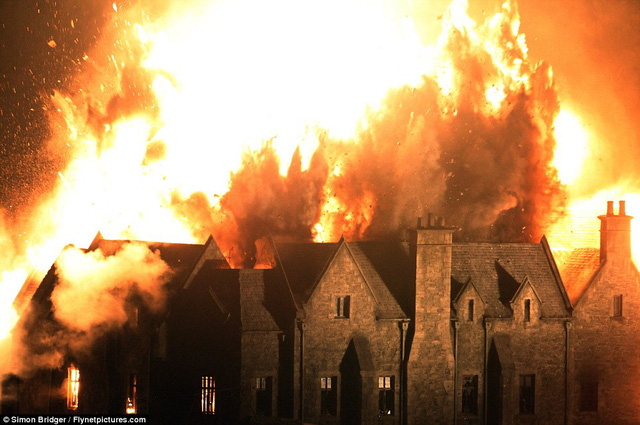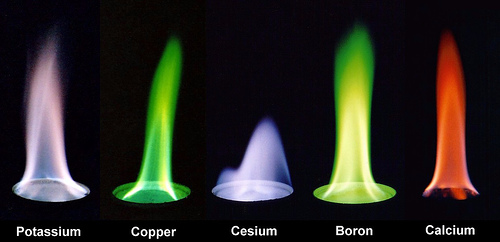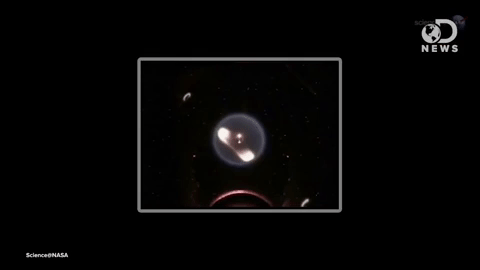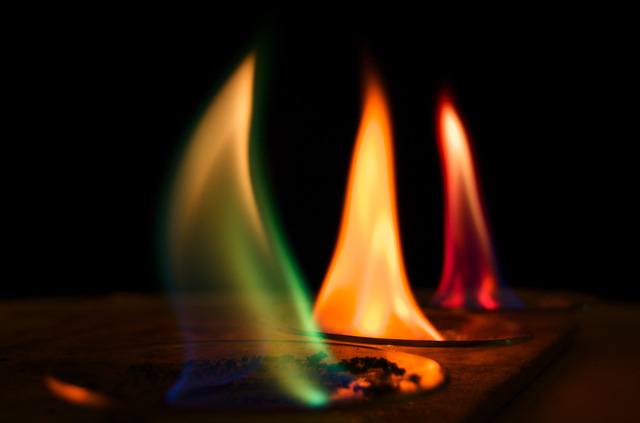What is fire? Material or energy?
Fire plays an important role, one of the most important factors in human life. Fire gives us light, heating, helps to cook food . But besides, fire is also a scary weapon, with infinite destructive power. It can destroy everything you have, even taking people's lives quickly.
- Terrifying hypothesis about the mysterious phenomenon of "self-igniting" like a fireball
- How is 1,000 ° C fire hose formed?

The fire burned down the house.
So, what is fire?
For the ancient Greeks, besides water, earth and air, fire was also a major element of the universe. We can see, send, feel and bring fire anywhere. But in fact, fire is not anything. While soil, water, and gas are made up of billions of atoms and remain in the same form, fire can turn to other forms.Fire is part of the chemical reactions between air oxygen and some kind of gas from gases, liquids and even solids when heated to their burning temperature.
When heated, the elements emit light. This 'light-generating heat' phenomenon is called combustion and this is why we can see the fire.
A colorful fire. Its color depends on fire and temperature materials. The hottest place has a blue flame, where the lowest temperature is yellow and orange.
 Color of fire when burning different elements - from left to right: Kali, Dong, Cesi, Bo, Calcium.
Color of fire when burning different elements - from left to right: Kali, Dong, Cesi, Bo, Calcium.
The heat from the fire can keep the fuel at a burning temperature, and they will burn until the fuel runs out or the oxygen around. Compounds containing carbon and hydrogen are most flammable because they are easily combined with oxygen in the air to create CO2, water and other gases.
On Earth, the way a fire burns depends on gravity. Compared to the surrounding air, the hot air in the flame is much hotter and thinner, so they will move towards the lower pressure. Therefore, fire often spreads upwards, and there is a 'tip' when burning.
In a zero-gravity environment in space, the flame will form a sphere.

A fire is made up of many different factors:
- Different materials will catch fire and burn at different temperatures.
- The fire burns fast or slow depending on the size of the fuel.
- The amount of heat generated during combustion depends on the structure of the fuel. The faster the burning rate and the more energy we have, the greater the amount of heat generated.
- The combustion rate also depends on the shape of the fuel. Large pieces will burn more slowly than thin pieces due to their contact area with less oxygen.

So, fire from different fuels has different characteristics. And fire is not a physical or energy form but it is a rapid oxidation of a material in an exothermic chemical reaction, releasing heat, light, and other reactive products. At the same time the fire is a visible part of the fire.
The fire is classified as a plasma gas - partially ionized. To form a flame, need and enough 3 elements: combustion, oxygen and heat sources.
You should read it
- Why do American jet engines emit red flames while Russian jets emit blue flames?
- 'Eternal fire' mystery has not been deciphered
- Things to know about Gauss malware
- Create surreal fire fire effect in Photoshop
- Busy chasing squirrels, the flame-tailed eagle crashed into the wall
- Instructions for building DTCL Single Flame 9.24 formation with Amumu
- Water can 'cut sweet' concrete and steel. Do you believe that?
- Risks from malware and how to prevent it
May be interested
- Dark Energy: New Discovery Turns Our Understanding of the Universe Into Over
 the universe is a strange place: only 5% of the mass of everything that exists is ordinary matter. the rest is 25% dark matter and 70% dark energy.
the universe is a strange place: only 5% of the mass of everything that exists is ordinary matter. the rest is 25% dark matter and 70% dark energy. - How does sunlight become solar energy?
 the solar power system takes energy from the sun and converts it to an inverter (inverter) where energy is converted into electricity to be used for daily needs.
the solar power system takes energy from the sun and converts it to an inverter (inverter) where energy is converted into electricity to be used for daily needs. - Top 15 Most Energy-Saving Air Conditioners Worth Buying Today
 you are wondering which type of air conditioner to choose that both cools well and saves electricity. please refer to the article top 15 energy-saving air conditioners today.
you are wondering which type of air conditioner to choose that both cools well and saves electricity. please refer to the article top 15 energy-saving air conditioners today. - Types of energy drinks in PUBG
 besides the weapons in pubg, energy drink items will also help players preserve their lives, adding opportunities to destroy opponents.
besides the weapons in pubg, energy drink items will also help players preserve their lives, adding opportunities to destroy opponents. - How to Get Free Crowned Sword Energy and Crowned Shield Energy Using Codes in Pokémon Go
 pokémon go is giving away a large amount of crowned sword energy and crowned shield energy for free via code ahead of the pokémon go fest global 2025 event.
pokémon go is giving away a large amount of crowned sword energy and crowned shield energy for free via code ahead of the pokémon go fest global 2025 event. - Learn about Chrome's new Memory Saver and Energy Saver modes
 there are two new chrome features that are designed to reduce memory usage and speed up the browsing experience, while helping to help increase battery life on mobile devices.
there are two new chrome features that are designed to reduce memory usage and speed up the browsing experience, while helping to help increase battery life on mobile devices. - Instructions to enable Adaptive Energy Saver to improve Windows 11 battery
 adaptive energy saver on windows 11 has a battery saving feature, improving battery performance on your computer. below are instructions to enable adaptive energy saver on windows 11.
adaptive energy saver on windows 11 has a battery saving feature, improving battery performance on your computer. below are instructions to enable adaptive energy saver on windows 11. - Blue Freedom Portable: A small-sized pocket-sized hydroelectric power station that can last for 10 hours and has a charge of 10 hours.
 blue freedom portable works like a hydroelectric power plant, using water power to create energy but tiny to carry easily on trips.
blue freedom portable works like a hydroelectric power plant, using water power to create energy but tiny to carry easily on trips. - What is Bluetooth Low Energy? How does BLE work?
 bluetooth low energy is based on bluetooth. it was released in 2011, and is also known as bluetooth smart and bluetooth 4.0.
bluetooth low energy is based on bluetooth. it was released in 2011, and is also known as bluetooth smart and bluetooth 4.0. - Energy Bar - Change the way of displaying battery status for Android
 if you want an icon that displays a more clear and interesting% battery status on android, you can use the free energy bar application.
if you want an icon that displays a more clear and interesting% battery status on android, you can use the free energy bar application.










 Close up of the place where the APEC National Bird's Nest is splendid as the palace in Da Nang
Close up of the place where the APEC National Bird's Nest is splendid as the palace in Da Nang Why does the clock, minute hand of the watch run from right to left without the opposite direction?
Why does the clock, minute hand of the watch run from right to left without the opposite direction? What flavor does the dinosaur meat taste good or not?
What flavor does the dinosaur meat taste good or not? Top 10 most expensive motorcycles in the world
Top 10 most expensive motorcycles in the world How will the world change in the next 1000 years?
How will the world change in the next 1000 years? Your bone structure also affects appetite
Your bone structure also affects appetite